PPC is one of the most effective forms of advertising for e-commerce businesses. Pay-per-click ads appear at the top or near the top of search engine results pages and are typically accompanied by a brief description that lets potential customers know what your company offers and how to contact you.
Due to its highly targeted nature, pay-per-click advertising is an excellent way to reach potential customers searching for products or services like yours online. It lets you precisely target your audience based on demographic information, geographic location, interests, and browsing behaviors. Additionally, since you only pay when someone clicks on your ad, it is an extremely cost-effective form of advertising that can help boost sales.
To get the most out of PPC advertising, it’s important to understand how it works. In this article, we’ll discuss the basics of PPC advertising, including how it works, the different types of PPC advertising, and how to create a successful PPC campaign.
Table of Contents
What is pay-per-click advertising, and how does it work?
Pay-per-click advertising, or PPC for short, is a form of online advertising that allows businesses to reach potential customers by placing paid ads at the top or near the top of search engine results pages. Pay-per-click ads display your company’s name and a brief description alongside relevant keywords in search engine results.
When someone clicks on your ad, you only pay a small fee – typically just a few cents per click. This makes PPC an extremely cost-effective way to reach new customers and boost sales for your e-commerce business.
PPC advertising is a popular way to generate leads and sales online. It’s also an effective way to build brand awareness. It can be used for any website, including e-commerce sites, blogs, and company websites.
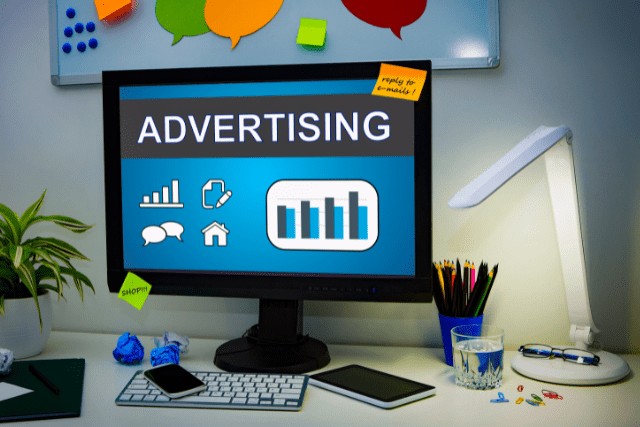
There are two main types of PPC advertising:
Search advertising: Search engine advertising is the most popular form of PPC. Advertisers bid on keywords that are relevant to their products or services. When someone searches for those keywords, the advertiser’s ad may appear in the search results.
It’s also the most effective, allowing you to target users actively searching for products or services like yours. The downside of search engine advertising is that it can be expensive as you compete for keywords with other businesses.
Display advertising: This type of PPC advertising involves placing ads on websites that are not search engines. Advertisers choose websites relevant to their products or services and bid on ad space. When someone visits the website, the advertiser’s ad may appear.
The advantage of display advertising is that it’s less expensive than search engine advertising, allowing you to reach a wider audience. The downside of display advertising is that it can be less effective than search engine advertising, as users may not be actively looking for your product or service when they see your ad.
Social media advertising is a newer form of PPC, but it’s quickly becoming one of the most popular. With social media advertising, you create ads displayed on social media platforms like Facebook, Twitter, and LinkedIn. The advantage of social media advertising is that it allows you to target users based on their interests and demographics. The downside of social media advertising is that it can be less effective than other forms of PPC, as users may not be as likely to click on an ad when scrolling through their feed.
Why use pay-per-click advertising for online sellers?
Several key factors make PPC an effective advertising strategy for e-commerce businesses.
Targeted Traffic
One of the primary benefits of pay-per-click advertising is that it can help to drive targeted traffic to your website. You can target your ads to a specific audience when you run a pay-per-click campaign. This means you can show your ads to people based on their location, age, gender, interests, and more.
Cost-Effective
Another benefit of pay-per-click advertising is that it is a cost-effective way to generate leads and sales. With pay-per-click advertising, you only pay when someone clicks on your ad. This means you can control your budget and only spend money on advertising when it will likely result in a sale.
Increased Brand Awareness
Pay-per-click advertising can also help to increase brand awareness for your business. People who see your ads will recognize your brand and become familiar with your products or services. This increased brand awareness can lead to more sales as people are more likely to purchase from a brand that they are familiar with.
Ability to Test Ads
Another benefit of pay-per-click advertising is that it allows you to test different ads before committing to a long-term campaign. You can try different ad copy, images, and targeting options to see what works best for your business. Once you find an ad that performs well, you can roll it out as part of a larger campaign.
Reach a Global Audience
Pay-per-click advertising also allows you to reach a global audience with your ads. If you want to sell products or services internationally, you can target your ads to people in specific countries or regions. This makes pay-per-click advertising an ideal option for businesses expanding their reach beyond their local market.

Best Tools for PPC Optimization
Mastering the art of PPC optimization is crucial for driving successful advertising campaigns. With the right set of tools, you can maximize your return on investment and unlock the full potential of your pay-per-click strategies.
Below are the best PPC optimization tools, empowering you to make data-driven decisions, streamline your campaigns, and achieve exceptional results. From keyword research to bid management, let’s dive into them.
1. Google Ads Keyword Planner: Unleashing Keyword Potential
The Google Ads Keyword Planner is an indispensable tool for PPC optimization. It allows you to research keywords, discover new opportunities, and estimate the performance of different keywords. By leveraging this tool, you can identify high-converting keywords with optimal search volume and bid range.
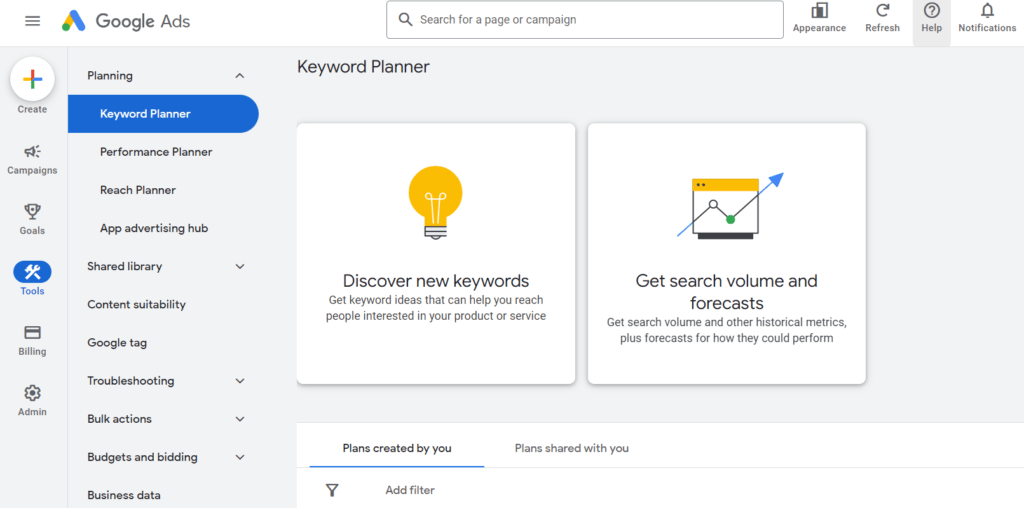
The Keyword Planner provides valuable insights into search volume trends, competition levels, and keyword suggestions. It enables you to identify relevant keywords related to your products or services, ensuring that your PPC ads reach the right audience. With this tool, you can refine your keyword targeting, optimize your ad groups, and enhance the overall effectiveness of your PPC campaigns.
2. SEMrush: Comprehensive Keyword Research and Competitor Analysis
SEMrush is a powerful all-in-one tool that provides a wide range of functionalities for PPC optimization. Its keyword research capabilities go beyond just search volume and competition analysis. SEMrush enables you to identify long-tail keywords, discover related keywords, and analyze the organic search rankings of your competitors.
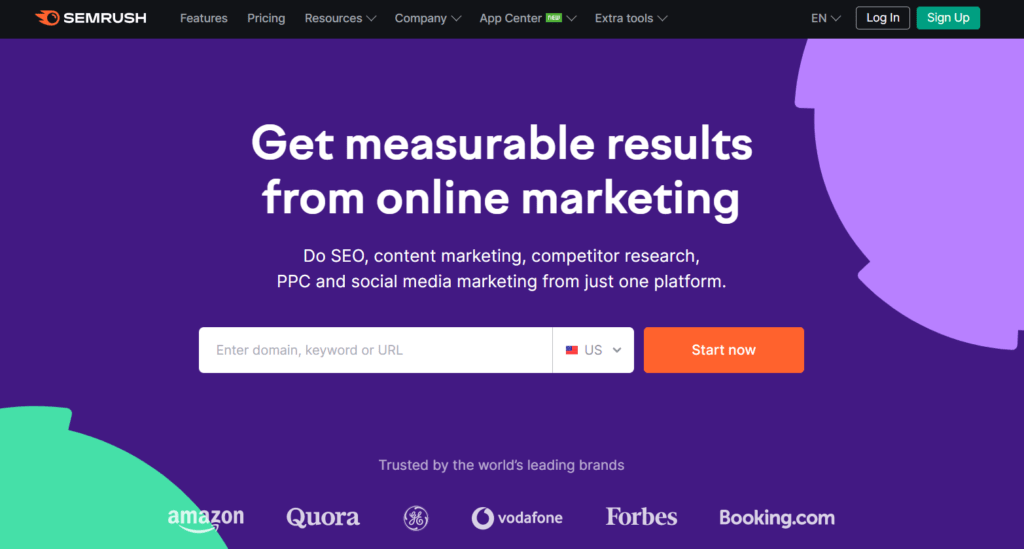
By leveraging SEMrush’s comprehensive keyword research features, you can uncover valuable insights about your target audience’s search behavior. This information empowers you to refine your keyword targeting, identify content gaps, and create highly relevant ad campaigns. Additionally, SEMrush offers robust competitor analysis features, allowing you to benchmark your performance against industry leaders and gain a competitive edge.
3. Optmyzr: Simplifying Campaign Management
Optmyzr is an advanced PPC optimization tool that streamlines campaign management processes. It offers a range of features designed to enhance the efficiency of your PPC campaigns and save you valuable time. One of its key features is automated bid management, which optimizes your bids based on predefined rules and performance data.
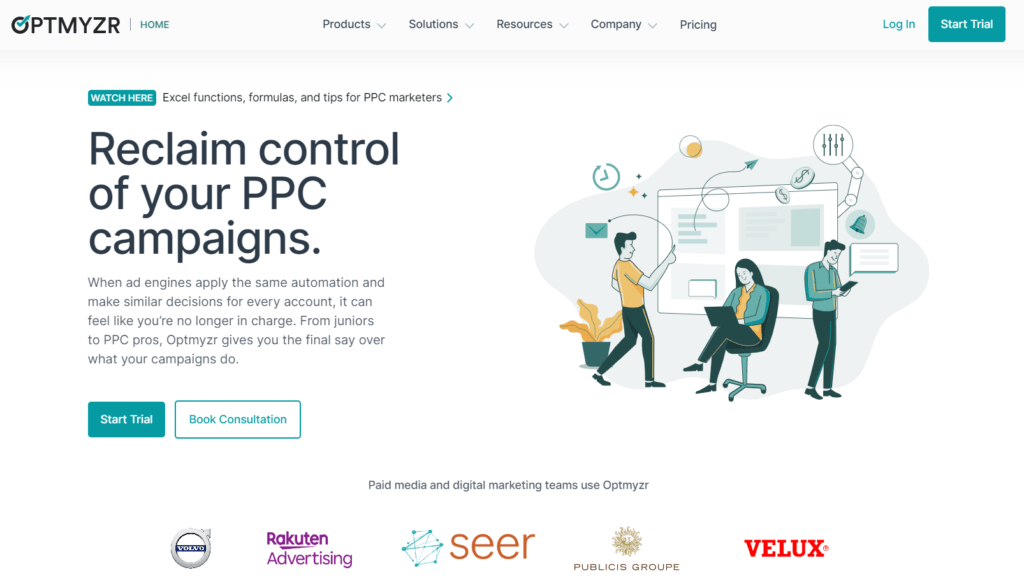
With Optmyzr, you can also conduct automated ad testing, ensuring your ads are optimized continuously for maximum impact. The tool provides actionable insights and recommendations to improve your ad copies, keywords, and targeting parameters. Optmyzr’s budget optimization feature also helps you allocate your budget effectively, maximizing your ROI. Its intuitive interface and comprehensive reporting capabilities make it a valuable asset for advertisers aiming to streamline their PPC campaigns.
4. WordStream: Enhancing PPC Performance
WordStream is a comprehensive PPC management platform that offers a suite of tools designed to enhance the performance of your campaigns. Its keyword management features simplify the process of organizing and optimizing your keywords. WordStream provides suggestions for negative keywords, helps identify keyword opportunities, and streamlines the process of adding keywords to your campaigns.
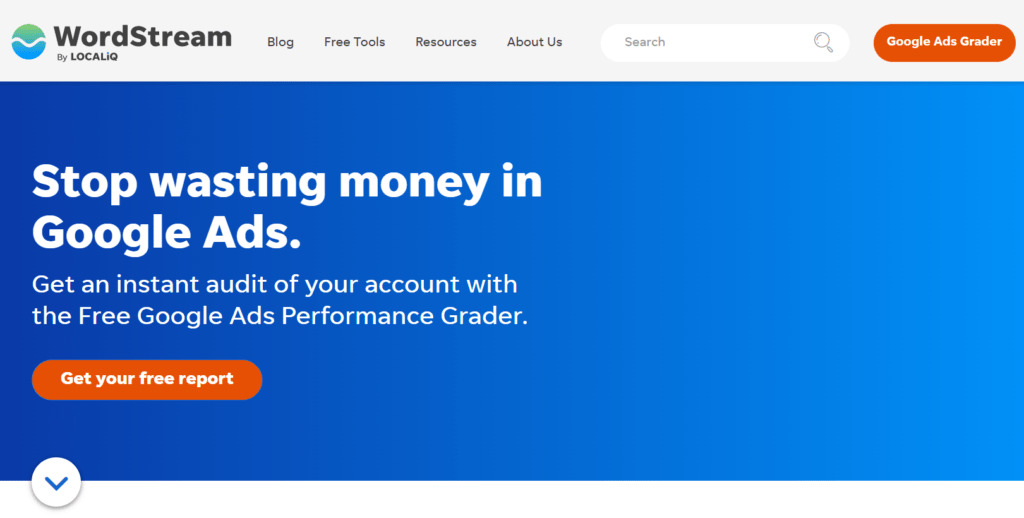
Moreover, WordStream’s ad creation and optimization features allow you to create compelling ad copies and conduct A/B testing to identify the most effective variations. The platform provides performance insights and recommendations, allowing you to improve your ads and drive better results continuously. With WordStream, you can streamline your PPC campaigns, save time, and enhance your overall PPC performance.
5. Google Analytics: Tracking Campaign Effectiveness
Google Analytics is a powerful tool for tracking the effectiveness of your PPC campaigns. Integrating your Google Ads account with Google Analytics gives you valuable insights into user behavior, conversion rates, and other crucial metrics. This integration allows you to analyze the entire customer journey, from the initial click on your ad to the final conversion.

Google Analytics provides detailed reports on key performance indicators (KPIs), such as bounce rate, time on site, and goal completions. These insights enable you to make informed decisions, optimize campaigns, and drive better results. By tracking campaign effectiveness with Google Analytics, you can identify areas of improvement, optimize landing pages, and refine your PPC strategies for maximum impact.
Also Read: The Complete Guide For Using Google AdWords To Boost Online Sales
6. AdEspresso: Streamlined Facebook Ads Optimization
For businesses leveraging Facebook Ads, AdEspresso is an exceptional tool for PPC optimization. Its user-friendly interface allows you to effortlessly create, manage, and optimize Facebook ad campaigns. AdEspresso’s powerful A/B testing capabilities enable you to fine-tune your targeting, creative elements, and ad placements for maximum impact.
AdEspresso simplifies creating and managing Facebook ad campaigns by providing a centralized platform for campaign management, creation, and reporting. Its intuitive interface allows you to set up targeted campaigns, monitor their performance, and make data-driven optimizations. AdEspresso’s extensive reporting features provide actionable insights to improve your campaigns continuously.
7. SpyFu: Uncover Competitor Strategies
SpyFu is a competitive intelligence tool that helps uncover your competitors’ PPC strategies. It provides insights into your competitors’ most profitable keywords, ad copies, and budget allocation. By leveraging this information, you can refine your campaigns, outsmart your competition, and gain a competitive edge.
With SpyFu, you can conduct in-depth competitor analysis and benchmark your performance against industry leaders. The tool lets you identify new keyword opportunities, monitor your competitors’ ad spend, and discover their top-performing ads. With this knowledge, you can refine your targeting, optimize your ad copies, and allocate your budget more effectively.
8. Unbounce: Conversion-Driven Landing Pages
Unbounce is a highly regarded tool in PPC optimization, specifically when creating conversion-driven landing pages. With its intuitive drag-and-drop functionality and extensive template library, Unbounce empowers marketers to design and build landing pages tailored to their PPC campaigns.
The drag-and-drop functionality of Unbounce makes it incredibly user-friendly and accessible, even for those without extensive coding knowledge. Marketers can customize their landing pages by adding headlines, images, forms, and call-to-action buttons. This flexibility allows for creating visually appealing and engaging landing pages that resonate with the target audience.
One of the standout features of Unbounce is its A/B testing capabilities. Marketers can create multiple variations of their landing pages and test them against each other to identify the most effective design and messaging. By experimenting with different elements, such as headlines, colors, and form placements, marketers can optimize their landing pages to drive maximum conversions.
Unbounce also provides valuable insights and analytics, allowing marketers to track the performance of their landing pages. They can monitor key metrics like conversion, bounce, and engagement metrics to understand how their landing pages perform. This data-driven approach enables marketers to make informed decisions and continuously improve their PPC campaigns.
9. Bing Ads Editor: Streamlined Campaign Management for Bing Ads
For businesses running PPC campaigns on Bing Ads, the Bing Ads Editor is an indispensable tool for streamlined campaign management. It offers a range of features that simplify managing and optimizing Bing Ads campaigns.
One of the key advantages of Bing Ads Editor is its ability to make bulk changes to campaigns. Marketers can easily update keywords, ad copy, bids, and other campaign elements in bulk, saving significant time and effort. This feature is particularly beneficial for large-scale campaigns or when making changes across multiple ad groups or campaigns.
The Bing Ads Editor also provides valuable insights into campaign performance data. Marketers can access detailed reports and metrics to understand their ads’ performance. This data can be used to identify areas of improvement, refine targeting, and optimize bidding strategies.
The Bing Ads Editor also allows seamless integration with other PPC tools and platforms. Marketers can import and export campaigns, ad groups, and keywords between Bing Ads and other tools, streamlining the workflow and ensuring platform consistency.
With its user-friendly interface and efficient campaign management capabilities, the Bing Ads Editor is a must-have tool for businesses looking to maximize the effectiveness of their PPC campaigns on the Bing Ads platform.
10. Google Optimize: Testing and Optimization Made Easy
Google Optimize is a powerful tool that simplifies A/B testing and website optimization. With Google Optimize, marketers can create experiments to test different variations of landing pages, ad copy, and website elements to identify the most effective strategies.
The process of setting up experiments in Google Optimize is straightforward and intuitive. Marketers can define their goals, create variations of their web pages, and allocate traffic to each variation. The tool then tracks user interactions and conversions, allowing marketers to measure the performance of each variation accurately.
One of the key advantages of Google Optimize is its seamless integration with Google Analytics. Marketers can leverage the data and insights from Google Analytics to inform their experiments in Google Optimize. This integration provides a holistic view of the user journey and enables marketers to make data-driven decisions when optimizing their PPC campaigns.
Google Optimize also offers advanced targeting options, allowing marketers to personalize their experiments based on specific audience segments. This level of granularity enables marketers to deliver a more tailored experience to different user groups, improving engagement and conversion rates.
Using Google Optimize, marketers can continuously refine their PPC campaigns based on real-time data and insights. The ability to test different variations and optimize website elements ensures that PPC campaigns consistently improve and drive exceptional results.
Also Read: Best Google Tools to Improve the Productivity of E-Commerce Business
How to create a successful pay-per-click campaign?
Creating a successful pay-per-click (PPC) campaign requires careful planning, strategic execution, and continuous optimization. To help you achieve the best results from your PPC efforts, here are some essential tips to guide you:
Define Clear Campaign Goals
Defining clear campaign goals is the first step in creating a successful PPC campaign. Ask yourself what you want to achieve with your campaign. Do you want to generate leads, increase sales, drive website traffic, or build brand awareness? Having specific and measurable goals will guide your campaign strategy and help you measure its success.
For example, if your goal is to generate leads, you can track the number of form submissions or email sign-ups resulting from your PPC ads. If your goal is to increase sales, you can track the number of conversions or revenue generated from your PPC campaigns.
Conduct Thorough Keyword Research
Keyword research is crucial for PPC success. Use keyword research tools like Google Ads Keyword Planner, SEMrush, or Moz Keyword Explorer to identify relevant keywords your target audience will likely search for. Look for keywords with high search volume and low competition.
Consider using long-tail keywords that are more specific and reflect user intent. Long-tail keywords often have lower competition, resulting in more targeted and cost-effective campaigns.
When conducting keyword research, pay attention to search volume, competition level, and relevance to your business. Select a mix of broad and specific keywords to reach a wide range of potential customers while maintaining relevance to your products or services.
Craft Compelling Ad Copy
Crafting compelling ad copy is essential to grab your audience’s attention and entice them to click on your ads. Your ad copy should convey your unique selling propositions, benefits, and call-to-action.
Start with a captivating headline that grabs attention and aligns with the user’s search intent. Use persuasive language and highlight what sets your business apart from competitors. Address the pain points of your target audience and offer a solution through your products or services.
Ensure that your ad copy aligns with the keywords you are targeting. Incorporate the target keywords into your ad copy to increase relevancy and improve your Quality Score, resulting in better ad rankings and lower costs.
Lastly, include a clear call-to-action (CTA) that encourages users to take the desired action. Whether it’s “Shop Now,” “Learn More,” or “Sign Up Today,” a strong and compelling CTA can significantly impact the click-through rate of your ads.
Optimize Landing Pages
Creating dedicated landing pages optimized for conversion is crucial for the success of your PPC campaigns. When users click on your ads, they should be directed to landing pages that provide a seamless and relevant user experience.
Ensure your landing pages have a clear value proposition that addresses the user’s needs and offers a solution. Use persuasive headlines, compelling visuals, and concise yet informative content to engage your visitors.
Design your landing pages with a user-friendly layout, making it easy for visitors to navigate and find the information they seek. Implement clear and prominent call-to-action buttons encouraging users to take the desired action, whether purchasing, filling out a form, or subscribing to a newsletter.
Optimize your landing pages for fast load times to prevent user frustration and abandonment. Compress images, minify code, and leverage browser caching to improve page speed.
Additionally, ensure that your landing pages are mobile-friendly and responsive, as an increasing number of users are accessing the internet via mobile devices.
Finally, continuously test and optimize your landing pages. Conduct A/B tests to experiment with elements like headlines, visuals, form placements, and button colors. Analyze the performance data and make data-driven decisions to improve the conversion rate of your landing pages.
Always keep your end goal in mind – whether it’s brand awareness, lead generation, or sales. Pay-per-click advertising can be a highly effective tool for achieving these goals if done well. With the right strategy and tools in place, you can experience impressive results with PPC.
Set a Realistic Budget
Setting a realistic budget for your PPC campaigns is essential to ensure that you can sustain your advertising efforts and achieve your desired goals. Determine your budget based on your campaign goals, industry competition, and expected return on investment (ROI).
Start with a conservative budget and gradually increase it as you gather data and optimize your campaigns. Monitor your campaign performance and adjust your budget to allocate more funds to high-performing campaigns or ad groups.
Remember that PPC advertising is an ongoing investment, and it may take time to achieve optimal results. Continuously monitor your costs, conversions, and ROI to ensure your budget delivers the desired outcomes.
Implement Conversion Tracking
Implementing conversion tracking is crucial for measuring the success of your PPC campaigns. Conversion tracking allows you to track and attribute conversions to specific campaigns, ad groups, or keywords.
Most PPC platforms, such as Google Ads and Bing Ads, provide conversion tracking tools. Install conversion tracking codes or pixels on your website to track actions such as form submissions, purchases, phone calls, or newsletter sign-ups.
You can gain valuable insights into which campaigns or keywords are driving the most conversions by tracking conversions. Use this data to optimize your campaigns, reallocate budgets, and focus on high-performing strategies.
Conversion tracking also calculates key performance metrics such as conversion rate, cost per acquisition (CPA), and return on ad spend (ROAS). These metrics help you measure the effectiveness of your campaigns and make informed decisions for optimization.
Test Multiple Ad Variations
Conducting A/B testing by creating multiple ad variations is a powerful technique to identify the most effective elements in your PPC campaigns. Test different headlines, ad copy, call-to-action buttons, visuals, or offers to understand what resonates best with your target audience.
Create two or more ad variations with a single variable changed in each, such as the headline or the call-to-action. Run these variations simultaneously and collect data on their performance.
Analyze the performance metrics such as click-through rate (CTR), conversion rate, and cost per conversion to determine which variation performs better. Keep the winning variation and create new variations to test further, continuously optimizing your ads for maximum impact.
Remember that A/B testing requires a sufficient sample size to draw statistically significant conclusions. Allow enough time for data collection before making decisions based on the test results.
Use Ad Extensions
Ad extensions are additional information that can be added to your PPC ads, providing more context and enhancing their visibility. Ad extensions not only improve the appearance of your ads but also increase the chances of attracting clicks and driving conversions.
Various types of ad extensions are available, such as sitelink extensions, call extensions, location extensions, review extensions, and more. Choose the relevant extensions to your business and align them with your campaign goals.
Sitelink extensions allow you to add links to specific website pages, giving users more options to explore. Call extensions display your phone number, enabling users to call your business directly from the search results.
Location extensions show your business address and map, making it easier for users to find your physical location. Review extensions showcase positive reviews or ratings from reputable sources, building trust and credibility.
By utilizing ad extensions, you can provide more information to users, improve the visibility and click-through rate of your ads, and ultimately drive more conversions.
Regularly Monitor and Optimize
Monitoring and optimizing your PPC campaigns regularly is essential to ensure their success. Continuously review your campaign performance metrics, identify areas for improvement, and make data-driven optimizations.
Monitor key metrics such as CTR, conversion rate, cost per conversion, and return on investment. Identify underperforming keywords, ads, or campaigns and take appropriate actions to improve performance.
Adjust keyword bids to maintain a competitive position while optimizing for optimal cost-effectiveness. Consider adjusting bids based on time of day, location, or device to align with your target audience’s behavior and preferences.
Refine your ad copy based on performance data and user engagement. Incorporate the best-performing elements from your A/B tests into your main ads. Test new variations and continuously strive for improvement.
Regularly review search terms reports to identify irrelevant or low-performing search queries. Add negative keywords to prevent your ads from showing for irrelevant searches, which helps improve the relevancy and cost-effectiveness of your campaigns.
Stay up-to-date with industry trends, competitor activities, and changes in consumer behavior. Continuously optimize your campaigns based on new opportunities or challenges that arise.
Analyze and Learn from Data
Data analysis is essential for optimizing your PPC campaigns. Leverage the data and analytics your PPC platforms provide, such as Google Ads or Bing Ads, to gain insights into your campaign performance.
Analyze the data to understand user behavior, identify patterns, and discover opportunities for improvement. Look for trends in click-through rates, conversion rates, and cost per conversion. Identify which keywords, ads, or landing pages perform well and generate the desired results.
Use the data to refine your targeting, messaging, and optimization strategies. Optimize campaigns by reallocating budgets, adjusting bids, or refining keyword lists. Experiment with new ad formats or targeting options based on data-driven insights.
Continuously monitor your campaign performance, and make informed decisions based on the data collected. Regularly review reports and dashboards to track your progress toward your campaign goals. By leveraging data analysis, you can make data-driven decisions and continuously improve the effectiveness of your PPC campaigns.
Common mistakes made with pay-per-click advertising
Although pay-per-click advertising can be highly effective, there are several common mistakes that many advertisers make. It can also be very expensive if you don’t know what you’re doing.
Not doing enough research.
One of the most common mistakes people make with PPC is not doing enough research. They’ll choose a few keywords and start bidding on them without knowing what they’re doing. This can lead to a lot of wasted money, as you’re likely to end up bidding on keywords that aren’t relevant to your product or service.
Bidding too much
Another common mistake is bidding too much on keywords. This can, again, lead to a lot of wasted money, as you’ll be paying more per click than you need to. It’s important to balance bidding too much and too little.
Not tracking results
Another mistake that people make is not tracking their results. This is important, as you need to know which keywords are working and which ones aren’t. You’re just throwing money away if you’re not tracking your results.
Not optimizing for conversion.
Another common mistake is not optimizing for conversion. This means you’re not making sure that your ads are relevant to your product or service and that they’re likely to convert into a sale. If you’re not optimizing for conversion, you’re likely to get a lot of clicks but very few sales.
Not testing
Another common mistake is not testing. This means you’re not trying different things to see what works and what doesn’t. PPC is a constantly evolving platform, and what works today might not work tomorrow. Testing different things is important to see what works for your business.
These are just some of the most common mistakes people make with PPC. If you’re thinking about starting a PPC campaign, avoid these mistakes, and you’ll be on your way to success.
Conclusion
PPC advertising is a great way to get your business in front of potential customers who are already interested in your offer. By targeting your ads to specific keywords and demographics, you can ensure that your ads are seen by people who are most likely to convert into customers.
While there is no one-size-fits-all approach to PPC advertising, there are some general best practices that you should follow to get the most out of your campaigns. In general, you should:
- Set a budget and stick to it
- Test different ad copy and landing pages
- Use negative keywords to filter out unqualified traffic
- Monitor your campaigns closely and make adjustments as needed
By following these best practices, you can maximize your chances of success with PPC advertising and get the most out of your marketing budget.
Frequently Asked Questions
What is PPC advertising?
PPC advertising is a type of online advertising in which businesses can display ads on search engine results pages (SERPs) and other websites. PPC ads are a way for businesses to generate leads and sales by displaying ads to people looking for what they offer.
How does PPC advertising work?
PPC advertising displays ads to people searching for terms related to your business. When someone clicks on your ad, they are taken to your website or landing page, and you are charged a fee for the click.
How much does PPC advertising cost?
PPC advertising costs can vary depending on many factors, including the competitive landscape, your bidding keywords, and your ad quality score. Businesses should generally expect to spend $1-2 per click on average.
What is a good quality score?
A good quality score is a score given to your ad by Google or another search engine based on several factors that indicate how relevant and useful your ad is. A high-quality score can result in lower costs per click and higher ad positions.
What are the benefits of PPC advertising?
PPC advertising can be an effective way to generate leads and sales for your business. It can also be a great way to promote your brand and get your name in front of potential customers. Here are the key benefits of using PPC optimization tools:
– Enhanced keyword research and targeting
– Streamlined campaign management
– Comprehensive data analysis and reporting
– Improved ad performance and ROI
– Competitive intelligence and benchmarking
What are the disadvantages of PPC advertising?
PPC advertising can be expensive, depending on how much you are willing to pay per click. It can also be time-consuming to manage a PPC campaign, as you need to continuously monitor your ad spending and adjust your bids to ensure you are getting the most bang for your buck.
PPC advertising can also be risky, as there is no guarantee that your ad will be clicked on. If your ad is not clicked on, you will not get any benefit from your PPC campaign.
What are the best free or budget-friendly tools for PPC optimization?
The most useful PPC tools for optimizing campaigns include Google Ads Editor, Google Analytics, Google Keyword Planner, Ubersuggest, and SEMrush. With proper PPC optimization, businesses can generate high-quality leads, improve brand visibility, and increase revenue.







